K-State Plant Disease Diagnostic Clinic
One of the best preventative measures for wheat streak is the control of volunteer wheat early and often after harvest. If volunteer wheat is allowed to stand, it creates a “green bridge”, allowing wheat streak mosaic and wheat curl mites to survive locally. Volunteer wheat should be terminated at least two weeks prior to planting to allow sufficient time for mites to die off.
Wheat streak mosaic is one of the most economically devastating wheat diseases in Kansas and the Great Plains. Control of volunteer wheat is the best way to prevent wheat streak mosaic virus losses in the wheat crop.
In 2017, WSMV caused a conservative $76.8 million in direct losses to farmers. [Read more]
Stop the Streak
There are basically only three ways to control the spread of wheat streak mosaic:
- Timely removal of volunteer wheat and other grassy weeds. The best way to prevent the spread of the wheat streak mosaic virus is to remove volunteer wheat and other grassy weeds. Volunteer wheat must be completely dead and dry for two weeks before planting a new wheat crop. Volunteer wheat and other grassy weeds can be removed with herbicides or tillage, but it’s absolutely essential to allow time for herbicides to work.
- Avoid early planting; plant after the hessian fly-free date. By avoiding early planting, Kansas wheat farmers are able to avoid times when wheat mite populations are the highest in late summer and to decrease the interval between planting and fall freeze events. "When we say avoid early planting, we’re not talking about planting outside of the window for success of your wheat crop,” said KSU Plant Pathologist Erick De Wolf. “We’re encouraging you to plant on the later side of the recommended planting dates."
- Plant varieties with moderate or high levels of resistance to WSMV.
- At this point in time, there are no chemical options such as insecticides or pesticides that are effective at controlling the wheat curl mite.
Genetic Resistance
Research is headed down the path of genetic resistance, and Kansas wheat farmers should know that help is on the way. However, there are only a few varieties with moderate resistance at the current time.
The WSM3 gene, which was discovered by Bernd Friebe at the Wheat Genetics Resource Center (WGRC) at Kansas State University, comes from wild relatives of wheat and is resistant to not only Wheat Streak Mosaic Virus, but it also provides protection from Triticum Mosaic Virus and High Plains Mosaic Virus as well. Another benefit of WSM3 is that it is not temperature sensitive, which has been a weakness in the current sources of resistance. This research is being partially funded by Kansas wheat farmers through the Kansas Wheat Commission’s two-penny wheat assessment. The WGRC is housed at the Kansas Wheat Innovation Center in Manhattan.
Recent news
-

Stop the Streak: Do Your Part
June 26, 2025
Kansas State’s wheat breeding programs are making major progress in fighting Wheat Streak Mosaic Virus (WSMV) by developing varieties with improved resistance and tolerance, including new gene…
-

A Perfect Storm: Kansas wheat fields hit hard by WSMV outbreak
May 7, 2025
“This is by far the worst year I’ve seen for impact of wheat streak mosaic virus in our area,” said Gypsum farmer Justin Knopf.
-

Wheat Scoop: Stop the Streak! Control volunteer wheat early and often to protect next year’s yields
July 25, 2024
Billowing clouds bringing summer showers are a welcome sight for sore eyes following a multi-year drought, but Kansas producers should also keep their eyes on their fields to monitor and control…
-
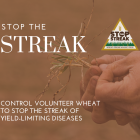
Control volunteer wheat to stop the streak of yield-limiting diseases
August 24, 2023
Volunteer wheat is certain to be a significant issue in the upcoming growing season, thanks to the late rains that delayed harvest progress and the high rate of abandoned fields. Hidden among the…
-
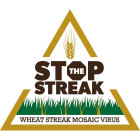
Did the drought stop the streak of WSMV? Don’t count the crop on it, K-State warns
October 4, 2022
Persistent drought after harvest and delayed planting could indicate a lower risk of Wheat Streak Mosiac Virus this year. Still, experts caution producers to continue monitoring and managing…
-
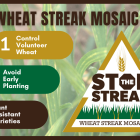
-

-
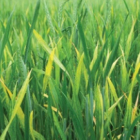
Stop the Spread of Wheat Streak Mosaic Virus by Controlling Volunteer Wheat
July 30, 2020
There is an increased risk of Wheat Streak Mosaic Virus in next year’s wheat crop, due to a number of factors. There is no treatment for WSMV, so the best way to stop the spread is by…
-
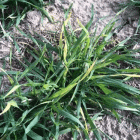
-
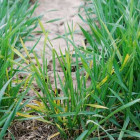
Pagination
- Page 1
- Next page
